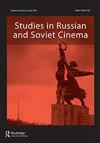The fairy-tale film goes to war: defence of the motherland in Aleksandr Rou’s Kashchei the Immortal
IF 0.4
0 FILM, RADIO, TELEVISION
引用次数: 0
Abstract
ABSTRACT Conceived and shot in the Soviet Union during the Great Patriotic War (WWII), Kashchei the Immortal (1945) offers a superlative illustration of just how effectively the time-honoured characters and narrative structures of folklore and fairy tale can be adapted to propagandist purpose. In using fairy tale as a nationalistic metaphor for war and conquest, Kashchei built upon longstanding international precedent, even as the particular time and place of its production shaped its ideology in crucial ways. Kashchei’s creators employed fairy-tale allegory to present a rousing parable of invasion and defence, which served as an urgent call to arms while proposing a roadmap for an avowedly righteous Soviet triumph. The film also reinforced the view that the perpetuation of shared national folk tradition cements community strength and spirit, and that folk-mindedness, and the patriotism it must surely inspire, is an indomitable weapon against foreign threat. As I demonstrate through a detailed close textual analysis, the film’s rich symbolism and expressive mise-en-scène are integral to the construction of a reassuring, motivational and easy-to-understand message that fully supported the Soviet Union’s broader wartime rhetoric.童话电影走向战争:亚历山大·鲁的《神仙喀什》中的祖国保卫战
摘要《不朽的喀什》(1945)构思并拍摄于伟大卫国战争(二战)期间的苏联,它最有力地说明了民间传说和童话故事中古老的人物和叙事结构是如何有效地适应宣传目的的。Kashchei将童话故事作为战争和征服的民族主义隐喻,建立在长期的国际先例之上,尽管其制作的特定时间和地点在关键方面塑造了其意识形态。Kashchei的创作者运用童话寓言来呈现一个关于入侵和防御的激动人心的寓言,这是一个紧急的号召,同时为苏联公开宣称正义的胜利提出了路线图。这部电影还强化了这样一种观点,即共同的民族民间传统的延续巩固了社区的力量和精神,民间思想及其必然激发的爱国主义是抵御外国威胁的不屈不挠的武器。正如我通过详细的近距离文本分析所证明的那样,这部电影丰富的象征意义和富有表现力的mise en scène是构建一个令人放心、激励和易于理解的信息的不可或缺的部分,该信息完全支持苏联更广泛的战时言论。
本文章由计算机程序翻译,如有差异,请以英文原文为准。
求助全文
约1分钟内获得全文
求助全文

 求助内容:
求助内容: 应助结果提醒方式:
应助结果提醒方式:


